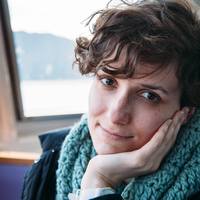ACADEMIC
Lecture
3 June 2021, 7.30 PM
Weaving Spirals: the Origin of Key Pattern
Cynthia Thickpenny
Key pattern is an abstract design formed by spiral shapes that turn at sharp angles, rather than in a curved fashion. Insular artists (i.e. artisans and makers in early medieval Britain and Ireland, c. AD 600-1100) used key pattern frequently and prominently in their art, including in manuscript illumination, carved stone, and metalwork. However, key pattern itself was not unique to the Insular world. Makers have applied it to art and architecture around the world for thousands of years. The earliest surviving example of key pattern was carved into mammoth ivory dating to c. 22,000-20,000 BC, from what is now Ukraine. Nonetheless, Insular varieties of key pattern stand out from their cousins from many other time periods and parts of the world because of their extreme geometric, mathematical complexity.
Today’s artists and scholars have offered various theories about how Insular key pattern was invented. In this lecture, Thickpenny will present evidence from her doctoral thesis that pinpoints Insular key pattern’s origins in contemporary woven textile patterns. These woven key patterns themselves developed from wider textile and basket weaving traditions that stretched across Eurasia and date back to at least the Neolithic period. By analysing the physical structure of woven designs, Thickpenny first will show how these textile patterns are a form of key pattern, and then how Insular artists made deliberate and radically creative changes to the patterns’ structure when transferring them to other, non-textile materials.
This lecture will shed more light on Insular makers’ innovative approach to abstract art and their virtuoso skill as geometers. It also will improve our understanding and appreciation of parallel key pattern traditions in other parts of the world, which also developed from weaving technology but without contact with early medieval Britain and Ireland.
Originally from the San Francisco Bay Area in California, Cynthia Thickpenny moved to Glasgow for her postgraduate studies. She earned a PhD in Celtic from the University of Glasgow in 2019, which was largely funded by a 3-year scholarship from the university’s College of Arts. Her thesis explored key pattern, an abstract design that can be found around the world, but which was particularly prominent and complex in Insular art. Her Masters research (funded by a Marshall Scholarship, also at the University of Glasgow) focused on other geometric patterns in Insular art, as well as Pictish symbol stones and their relationships to Pictish politics and land organisation. In 2019, Thickpenny won the Society of Antiquaries of Scotland’s RBK Stevenson Award for her article, ‘Abstract Pattern on Stone Fragments from Applecross: The Master Carver of Northern Pictland?’. In 2020, she edited and published, Peopling Insular Art: Practice, Performance, Perception, the proceedings of the eighth International Conference on Insular Art, together with Professor Katherine Forsyth and Dr Kate Mathis of the University of Glasgow, and Professor Emerita Jane Geddes of the University of Aberdeen.
The event is accessed via Zoom. No physical access to the museum is required.
Booking is essential.

